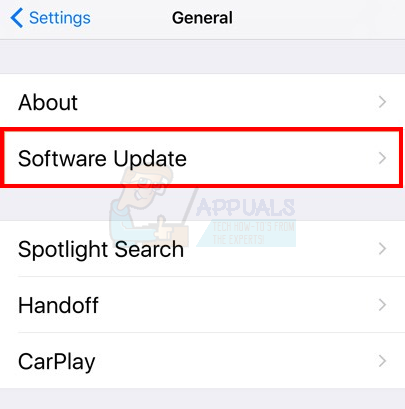Fix: iTunes invalid response was received from the device
iTunes provides a great and easy way to download, play and organize your media files on your computer. Since we use personal computers on daily basis, it’s nice to have these media files on our computers as well. In order to use the iTunes, you have to download and install the iTunes application on your computer. Sometimes, you might face a problem while trying to connect your iPhone to your Window’s iTunes application. You will see a message “iTunes could not connect to the iPhone because an invalid response was received from the device“. This message will prevent you from connecting your iPhone to your iTunes.
The most likely reason for this error is the incompatibility issue. Your iTunes version might not be updated to the latest version and, therefore, incompatible with the iOS version. Your iTunes application needs to be at a certain version in order to work with certain iOS versions. Usually, the solution of this problem revolves around updating your iTunes as well as iPhone. If these things doesn’t solve the issue then there are a couple of other things that can be done to rectify the situation. So, let’s get started
Tips
Before you go on a quest to follow all the steps in all of the methods given below, try to troubleshoot and solve the issue by following our simple tips
- Restart your iPhone and computer. Sometimes a restart fixes these kind of issues
- Make sure your USB port is working. Try a different port
- Your USB cable can also be broken or faulty. Try to connect the iPhone with a different USB cable
- Make sure your iPhone isn’t locked while connecting to the computer. A locked iPhone can cause issues with the connectivity
- Rarely, the problem might be caused by your iPhone’s network settings. Reset your Network settings by tapping on Settings > General > Reset > Reset Network Settings
Method 1: Update iTunes
Since the issue is related to version compatibility problem, it’s logical to update the devices and software involved. So, let’s start by updating the iTunes application to make sure you have the most updated version.
Follow the steps given below if you are on Windows
- Open iTunes
- Click Help
- Select Check for updates

- Install the updates if there are any available.
If you are on Mac, do the following
- Open App Store
- Click Update
- Select Install if it finds any newer versions.
Once your iTunes is updated, check if it resolves the issue
Method 2: Reinstall iTunes
If updating the iTunes didn’t solve the issue then you should try to uninstall and reinstall the iTunes.
The steps for uninstalling and reinstalling iTunes are given below
If you are on Windows, do the following
- Hold Windows key and press R
- Type appwiz.cpl and press Enter

- Locate your iTunes application and select it
- Click Uninstall and follow the on-screen instructions

If you are on Mac, do the following
- Type Terminal in the Spotlight Search
- Select Terminal from the search results
- Type cd /Applications/ and press Enter
- Type sudo rm -rf iTunes.app/ and press Enter
- Enter the admin password
Once done, click here and click the Download now button. If you are on Mac, click here and click the Download now button.
Once the download is finished, double click the downloaded file and install the iTunes application again. Check if this resolves the issue for you.
Method 3: Update iPhone
Since the latest version of iTunes work with certain iOS versions, updating your iPhone to the latest iPhone version can solve the issue as well.
Here are the steps for updating your iPhone
- Open your iPhone
- Tap Settings
- Tap General

- Tap Software update

- If there is an update available then tap Download and Install
- Enter your password (if it asks)
- Tap Agree
Once the update is installed, try to connect your iPhone again and see if the error is gone or not.